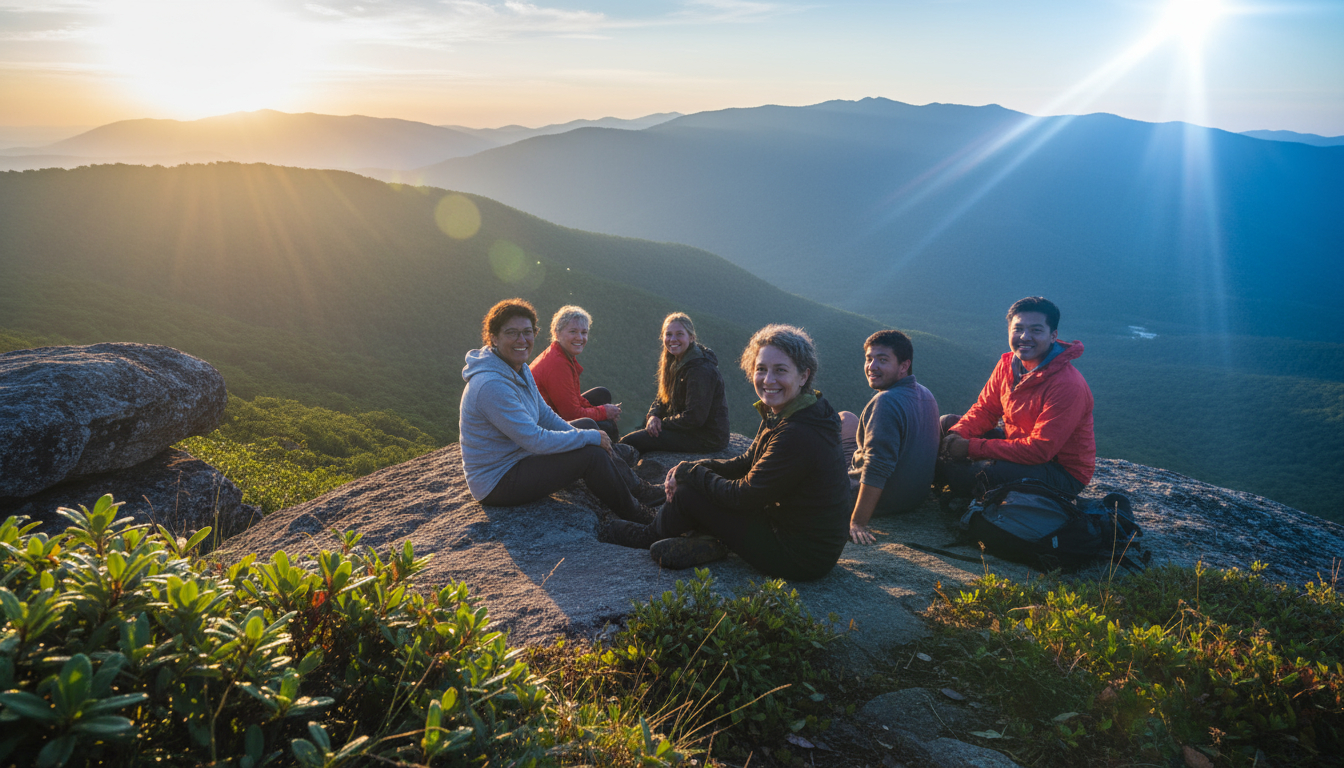The call of the wilderness is universal, a deeply ingrained human desire to reconnect with the natural world, breathe clean air, and challenge the body. Yet, for many, the idea of a “hike” conjures images of grueling ascents and advanced survival skills, often acting as a barrier to entry. Fortunately, the world of outdoor tourism has evolved dramatically, shifting its focus from extreme endurance to inclusive, rewarding experiences. Today, guided nature hikes for all skill levels are the standard, offering perfectly tailored adventures that allow everyone, from the absolute novice to the seasoned trekker, to enjoy the profound benefits of the trail.
The evolution of the guided hike is a direct response to a broader appreciation for accessible outdoor activity. No longer is participation limited by age, fitness, or prior experience. Modern guiding services pride themselves on creating routes and programs that are categorized by clear, understandable metrics, ensuring that expectations align perfectly with reality. This focus on inclusion means that families with young children, seniors, individuals recovering from injury, and elite athletes can all find a meaningful journey under the stewardship of a professional guide. This comprehensive approach is not just about making the trail physically accessible, but also educationally and psychologically welcoming.
Decoding the Levels: Finding Your Perfect Nature Hike
Before booking an adventure, understanding the universally accepted difficulty ratings is key. Professional guided nature hikes typically classify their offerings into distinct categories, providing transparency and helping participants make informed choices.
Gentle and Easy Trails: The Gateway to Nature
These hikes are designed for those new to the activity, families, or anyone seeking a relaxed, restorative experience. They usually involve minimal elevation gain and cover shorter distances, often less than three miles. The focus here is on immersion and education. Guides on these gentle nature hikes are excellent storytellers, pointing out local flora and fauna, sharing geological history, and explaining ecological principles. They move at a very comfortable pace, with frequent stops for photography and rest. This category is perfect for building confidence and serves as an ideal introduction to the activity. Furthermore, many such trails are designed to be wheelchair-accessible or stroller-friendly, demonstrating a commitment to true inclusivity.
Moderate Hikes: Stepping Up the Challenge
The next tier involves a moderate increase in distance, elevation, or both. These trails might range from five to eight miles and include sustained uphill sections that require a reasonable level of fitness. The environment often becomes more rugged, moving from manicured paths to natural dirt trails, and potentially requiring some agility. A moderate guided nature hike offers a rewarding physical challenge without demanding specialized equipment or extreme exertion. It is the sweet spot for regular exercisers who are looking for a satisfying day trip. Guides focus on pacing management, basic navigation skills, and deeper dives into the environmental context of the region. They also carry more substantial safety gear, reflecting the more remote nature of these paths.
Strenuous and Advanced Treks: The Test of Endurance
Reserved for experienced, fit hikers, these challenging treks involve long distances, significant elevation changes, and sometimes technical terrain such as scrambling or navigating loose rock. They can span full days or even multiple days requiring overnight camping. Safety is paramount here, and guides are typically highly certified, often wilderness first responders. Participation in such guided nature hikes for all skill levels—at this end of the spectrum—often requires a brief screening by the guiding company to ensure all participants are adequately prepared, a measure taken for the safety and enjoyment of the entire group. This level offers unparalleled views and a profound sense of accomplishment, connecting hikers to truly remote and untamed landscapes.
The Invaluable Role of the Nature Guide
While a map and a pair of boots are all that is technically needed to hike, the presence of a knowledgeable guide elevates the experience from a walk to an educational journey. Guides are far more than just navigators; they are interpreters of the landscape. They can identify the migratory patterns of birds, explain the medicinal properties of plants, and recount the historical significance of the trails.
A primary benefit of a guided hike, especially for beginners, is safety and preparedness. Guides carry extensive first-aid kits, communication devices, and know how to react to unexpected weather changes or encounters with wildlife. They manage the logistics of the trip, from securing permits to coordinating transportation, which removes all the administrative burdens from the hiker. This allows participants to fully focus on the scenic environment and the physical activity. Additionally, the guide sets a sustainable pace, preventing hikers from overexerting themselves early on, a common pitfall for new adventurers. A professional guide ensures that the experience is both enriching and secure for every participant.
Global Destinations for Guided Trail Experiences
The best guided nature hikes can be found in nearly every country, but certain regions stand out for their commitment to trail diversity and professional guiding services.
In North America, national parks like Yosemite and Grand Canyon offer an exceptional variety of guided tours (based on search results). These range from gentle, interpretive walks focused on local geology and history to rigorous, multi-day backpacking trips deep into the backcountry. The infrastructure supporting these hikes is often world-class, making them highly reliable options for international travelers. Many services offer specialized theme hikes, such as photography tours during the monsoon season or bird-watching expeditions in the spring.
Europe provides a rich tapestry of experiences, from the alpine trails of the Dolomites to the coastal paths of the Scottish Highlands. Companies operating in these regions are often specialists in local culture, blending the physical challenge of hiking with culinary stops and historical context. For example, a guided trek through Italy might include stops at local mountain huts for traditional meals, transforming the hike into a holistic cultural experience. The history embedded in the ancient European trails adds a layer of depth that is difficult to replicate elsewhere.
Asia and South America present opportunities for more immersive and physically demanding guided nature hikes. The Himalayas offer journeys like the Annapurna circuit, which are life-list adventures requiring experienced guiding to navigate altitude and remote logistics. In Patagonia, guides are crucial for interpreting the fast-changing weather patterns and ensuring safe passage across complex, glacially-carved terrain. These regions often involve interaction with local communities, further enriching the guided experience.
Benefits Beyond the Physical
While the physical fitness gains from hiking are obvious, the mental and emotional benefits are equally compelling. Spending dedicated time in nature has been scientifically linked to reduced stress and improved cognitive function. A guided nature hike enforces a digital detox, forcing participants to engage with their surroundings rather than their screens.
Moreover, group hikes foster a unique sense of community. Sharing a challenge, supporting fellow hikers through a tough ascent, and celebrating the view at the summit create bonds that often last long after the trip is over. This social aspect is especially valuable for solo travelers or those looking to expand their network of like-minded outdoor enthusiasts. The shared goal of completing the trail, regardless of the skill level, unites the group.
Preparing for Your Guided Hike Adventure
Even for an easy trail, preparation is essential for maximum enjoyment. Participants should invest in good quality footwear that is broken in before the trip. Layered clothing is always recommended to manage body temperature as conditions change. While the guide will provide communal safety gear, every hiker should carry their own water (a minimum of 2 liters for a full day), snacks, sun protection, and a small personal first-aid kit.
When researching a guided service for guided nature hikes for all skill levels, look for guides with certifications in wilderness first aid and local expertise. Check online reviews to assess the quality of the interpretation and the group’s overall experience. Reputable companies will always provide a detailed itinerary, a gear list, and a clear description of the trail’s difficulty, allowing you to select an adventure that is perfectly matched to your capabilities and aspirations. A well-chosen guided hike is not just an activity; it is an investment in personal well-being and a pathway to a deeper appreciation of the planet’s breathtaking landscapes. The right guide turns a simple trail into an unforgettable, inspiring journey.

 Guided Nature Hikes: Embracing the Trail for Every Skill Level">
Guided Nature Hikes: Embracing the Trail for Every Skill Level">
